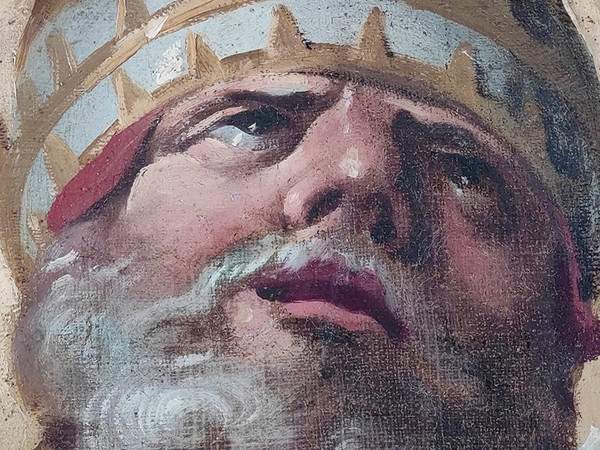Among the Brescian exhibitions (at least six) dedicated to painter Giacomo Ceruti (Milan, 1698 - 1767) in the year of the Capital of Culture (including the major exhibition Miseria e Nobiltà atthe Museum of Santa Giulia in Brescia), includes an all new exhibition conceived in Gandino (Bergamo) where the Basilica of Santa Maria Assunta houses the most interesting sacred cycle executed by Ceruti in his career. Promoted and realized by the Parish of Gandino and the Gruppo Amici del Museo della Basilica, with the support of Fondazione Credito Bergamasco, the proposed exhibition was initially conceived as a section on the territory of the Brescia exhibition Ceruti Sacro e la pittura a Brescia tra Ricci e Tiepolo, but it has since taken an unexpected turn, thanks to restorations and rediscoveries that are destined to open new lines of research on the painter’s production. The exhibition is curated by the rector of the Basilica Museum, Francesco Rizzoni, with contributions from two scholars of Ceruti’s painting, Francesco Nezosi and Filippo Piazza.
It begins with the never-investigated chapter within the Bible painted by Pitocchetto in the Gandino Basilica. In September 1733, Ceruti fled Brescia: hounded by creditors because of unfortunate investments, he took refuge in the Bergamo area, first in Gorlago and then in Gandino, where he stayed until 1735, when he was called to Venice in the service of Field Marshal Johann Matthias von der Schulenburg.
The Gandino cycle is famous, but while the large canvases and the series of Prophets have been the subject of conservation attention and study over the years, the same fate had not befallen the gallery of saints that Ceruti set in the two chapels flanking the chancel, aided by their dizzying location some 13 meters above the ground: St. Pontian Pope in Glory and two ovals with St. Quirinus and St. Valentine; St. Peter in Glory with two ovals with the Repentance of St. Peter and St. Peter Freed from Prison.
Removed today for the first time from their original location, the six canvases were examined closely and underwent a restoration, carried out by Antonio Zaccaria and supported by Fondazione Credito Bergamasco, flanked by a campaign of scientific investigations conducted by Vincenzo Gheroldi. Being faced with a very rare case of “untouched” paintings, preserving all the original elements, the conservation intervention grappled with the very delicate task of resolving the elements of degradation while leaving intact all the constituent materials that, as of today, constitute a reservoir of information to open up the study of Ceruti’s execution technique: from the shaped and curved wooden frames, small masterpieces of wooden carpentry, to the technique used by Pitocchetto to simulate mural painting, to the dozens of fingerprints left by the artist on the still-fresh paint. All these details can be appreciated in the exhibition, face to face with the six canvases that have never been seen up close, and in particular with the two large canvases depicting St. Pontian Pope and St. Peter in Glory, which can exceptionally also be seen on the back.
For the first time, original documents kept in Gandino’s parish archives will be on public display, including the registers containing payments to Ceruti, which, together with the reproduction of the contract he signed with the Regents of the Basilica (kept at theState Archives in Bergamo), make it possible to reconstruct the stages of his stay in Gandino.
Absolute novelties also on the front of the protagonists of Ceruti’s “adventure” in Gandino. On display is not only the fine portrait of Francesco Marinelli, vicar in Gandino during Ceruti’s stay, but also the portrait of the notary who prepared the contract for the Gandino works, Silvestro Ponziano Patirani. The work, whose location was unknown until now, is being exhibited in public for the first time and can be counted among the best portraits painted by the Milanese master before he left for Venice.
To recall the extraordinary heritage that tells of Gandino’s great textile tradition, a planet has been selected to match the one reproduced on the canvas depicting St. Valentine. From the halls of the Museum, the exhibition continues ideally inside the Basilica of Santa Maria Assunta where more than 30 works by Giacomo Ceruti, including canvases and frescoes, can be admired.
The publication Ceruti in Gandino, edited by Francesco Nezosi and Filippo Piazza, which will be presented next fall, will collect and elaborate on the news that emerged from the project, also offering scholars new research perspectives on the work of Giacomo Ceruti.
For all information, you can visit the official website of the Gandino Basilica Museum.
Pictured: Giacomo Ceruti, St. Peter in Glory (detail), 145x120 cm, after restoration. Gandino, Basilica of S. Maria Assunta
 |
| Restoration of six precious paintings by Giacomo Ceruti on display in Gandino |
Warning: the translation into English of the original Italian article was created using automatic tools. We undertake to review all articles, but we do not guarantee the total absence of inaccuracies in the translation due to the program. You can find the original by clicking on the ITA button. If you find any mistake,please contact us.